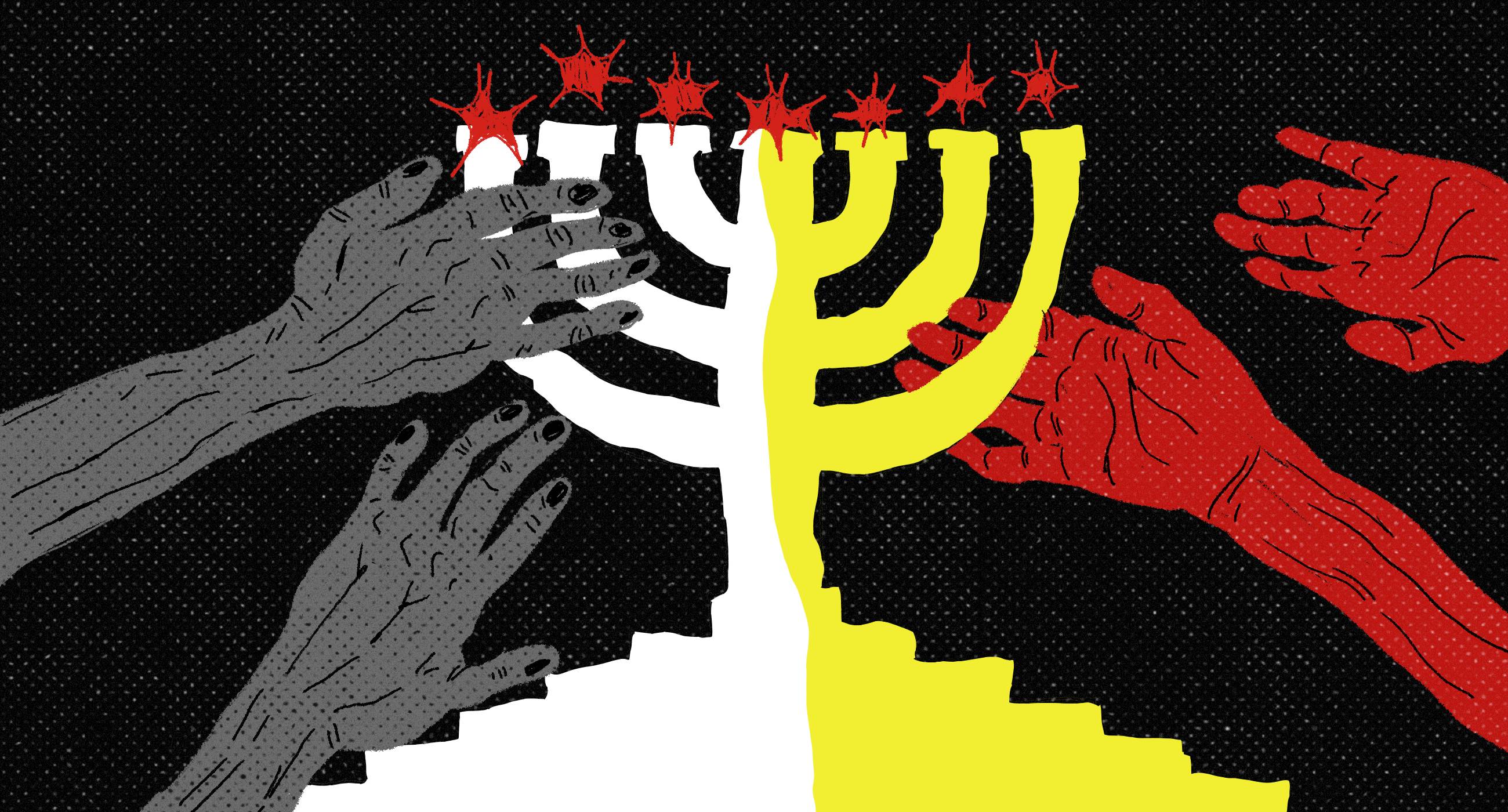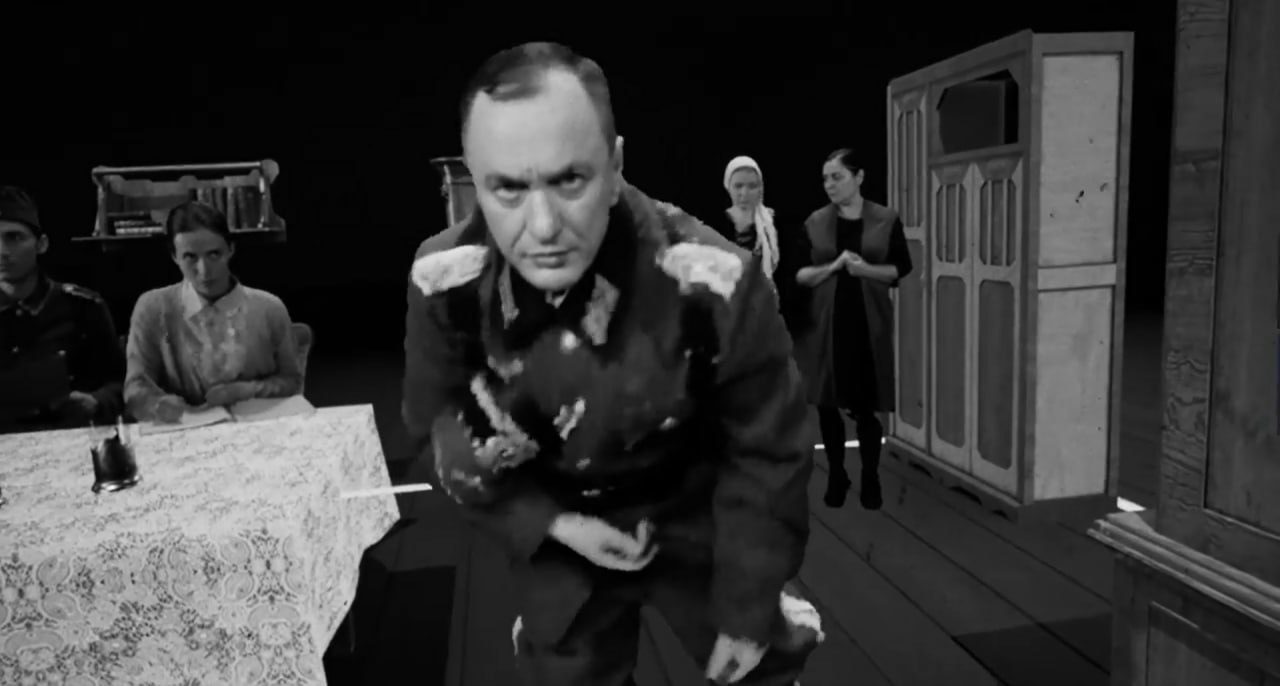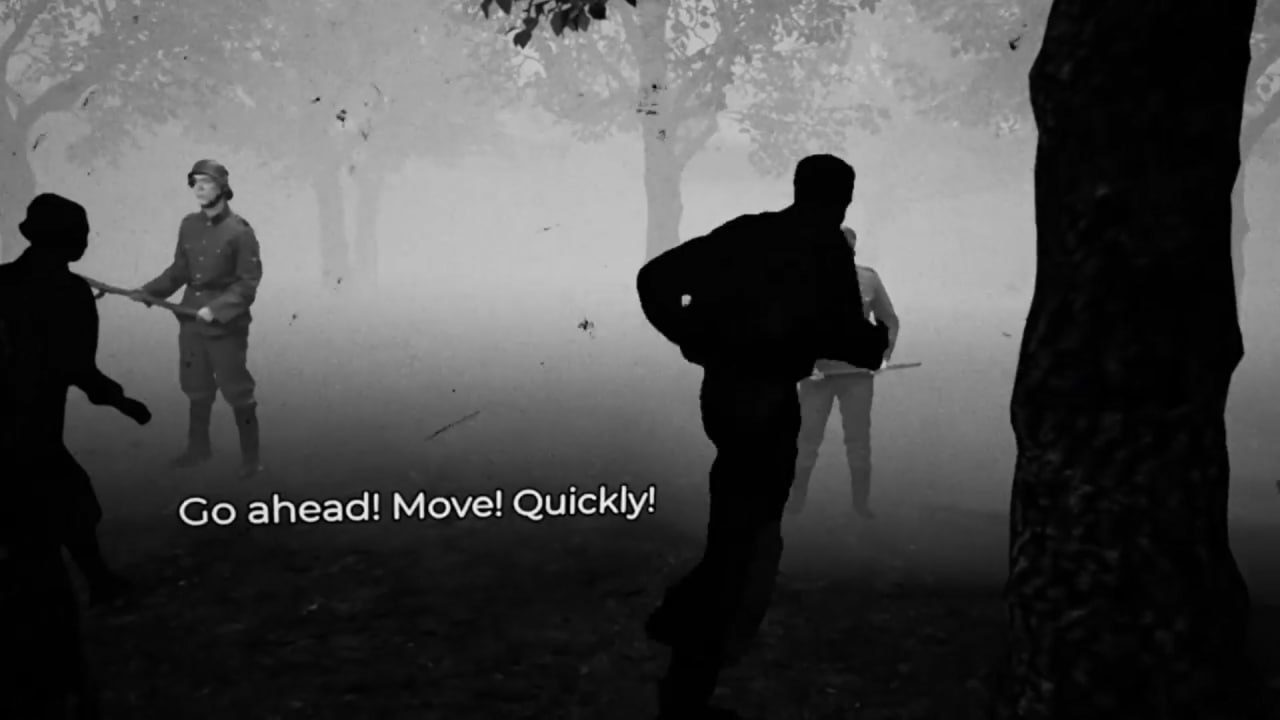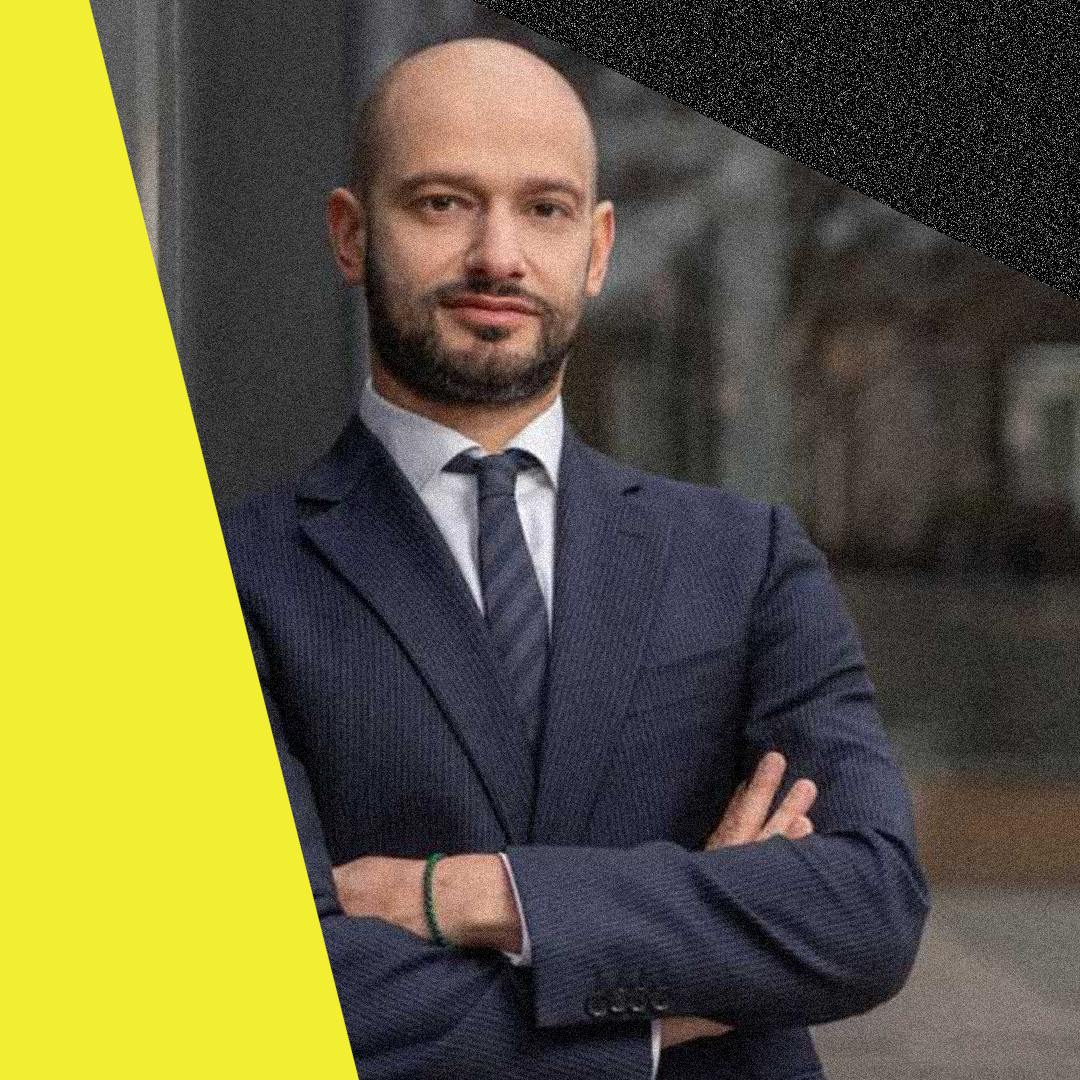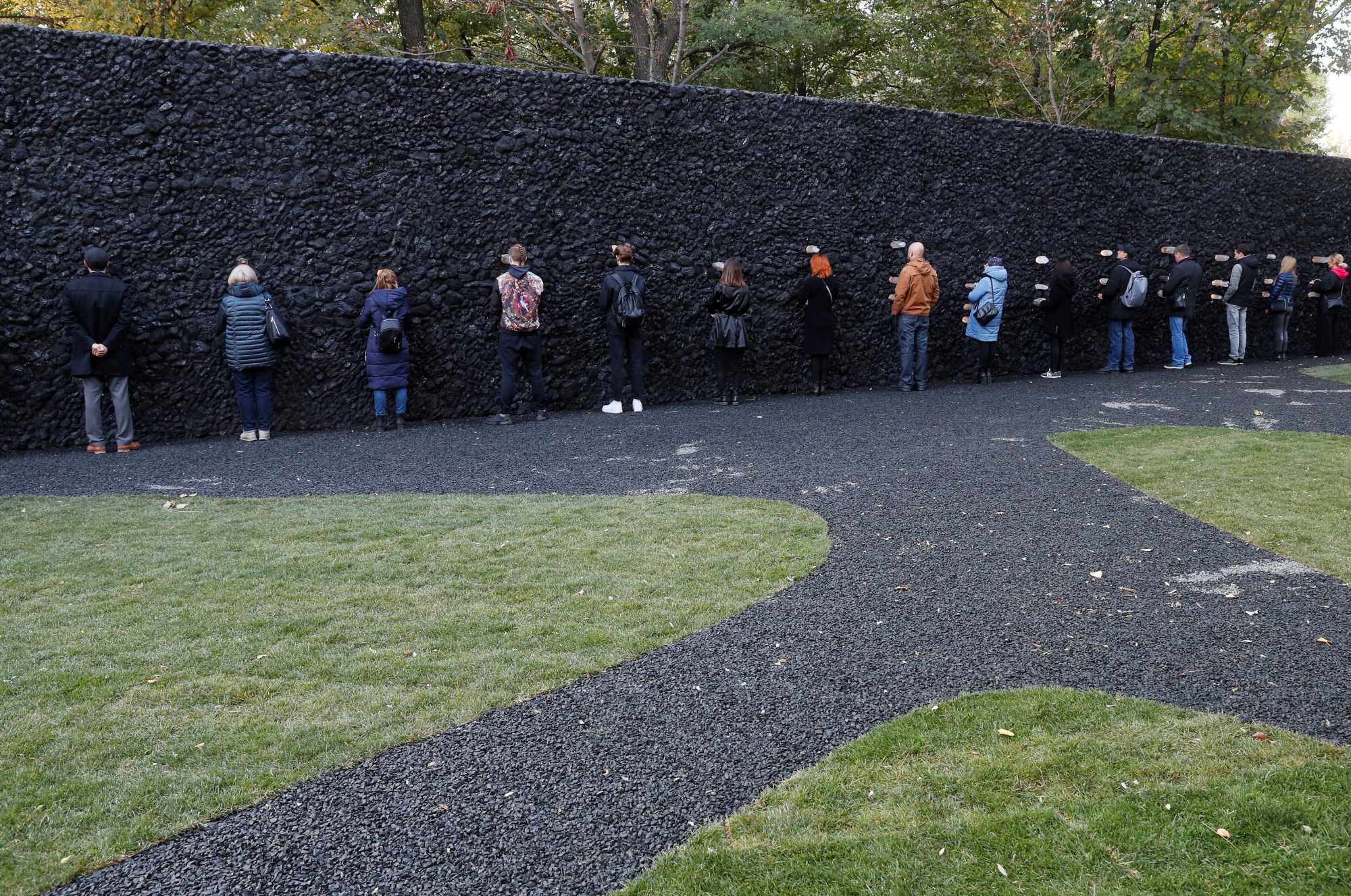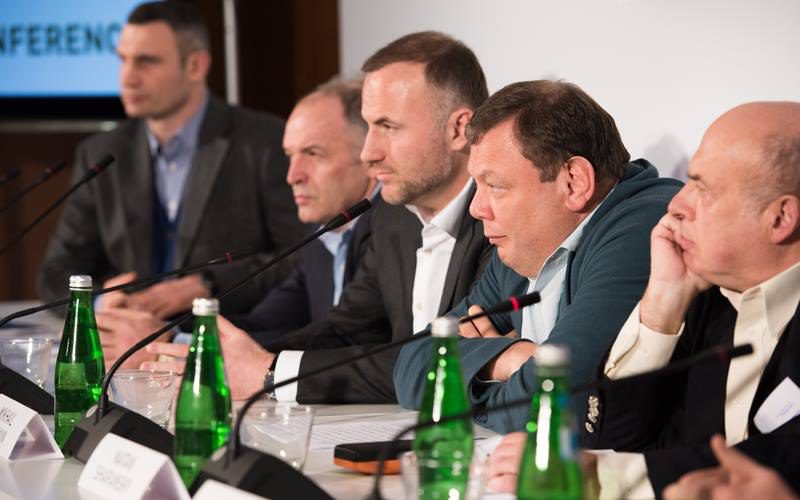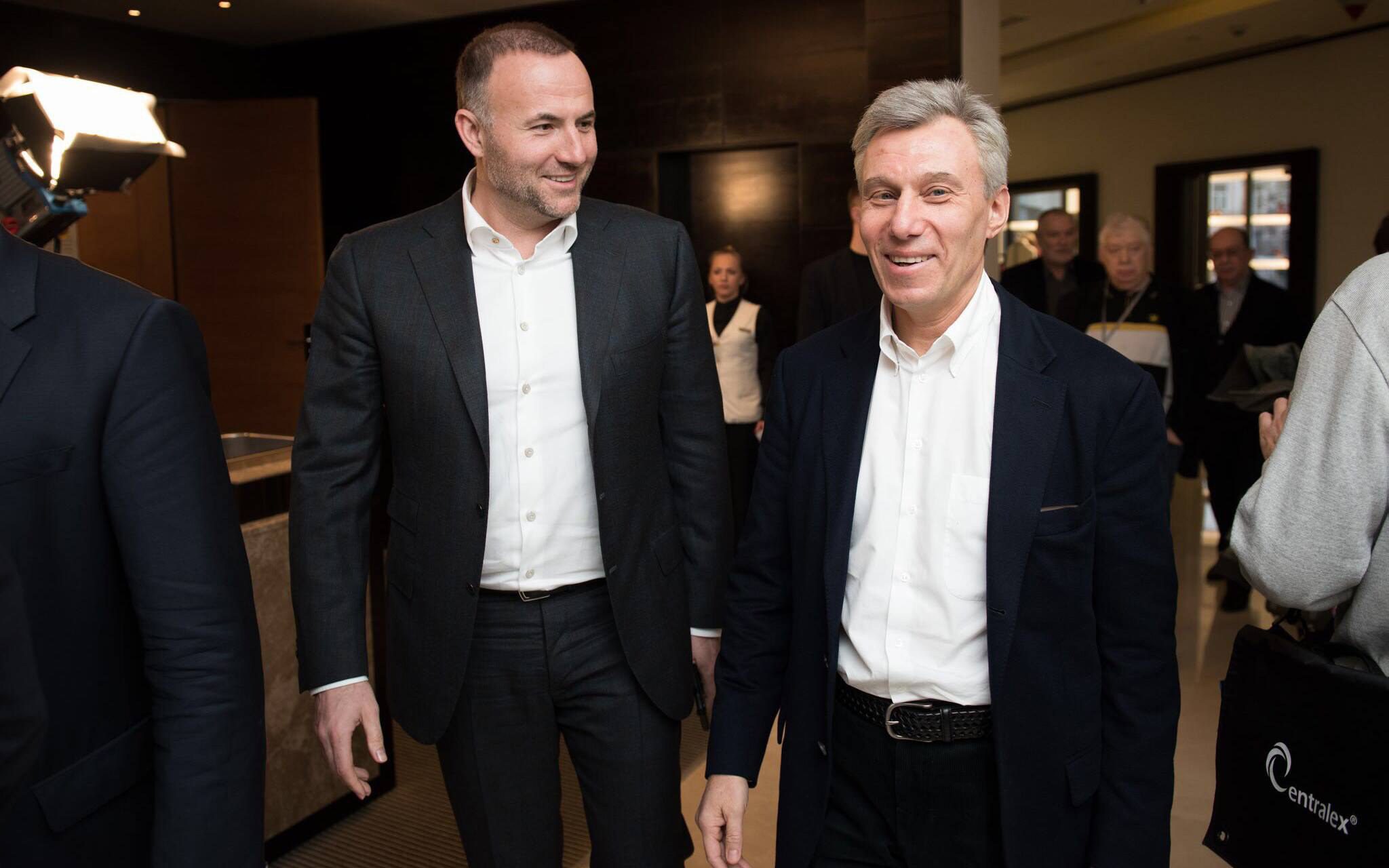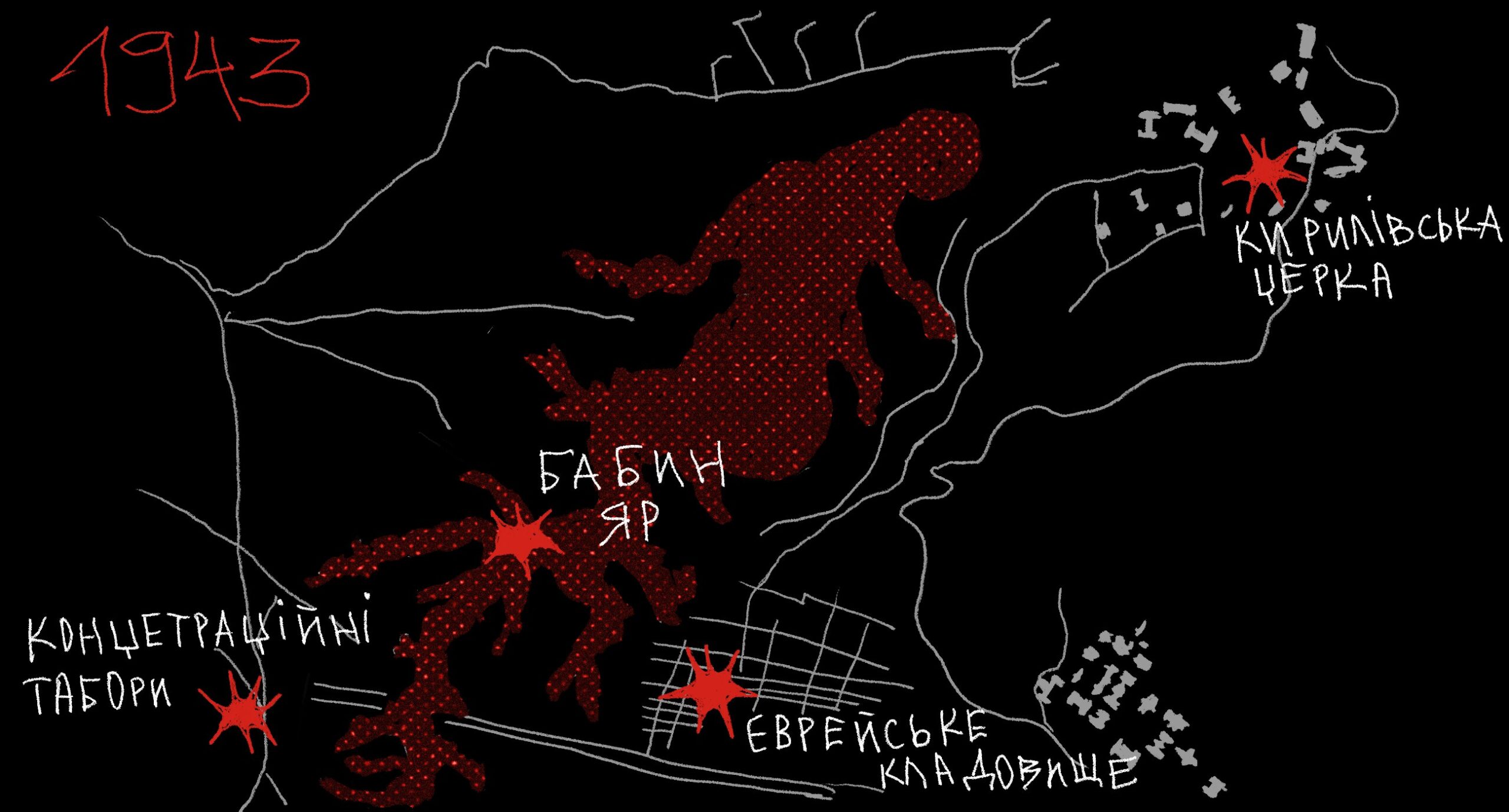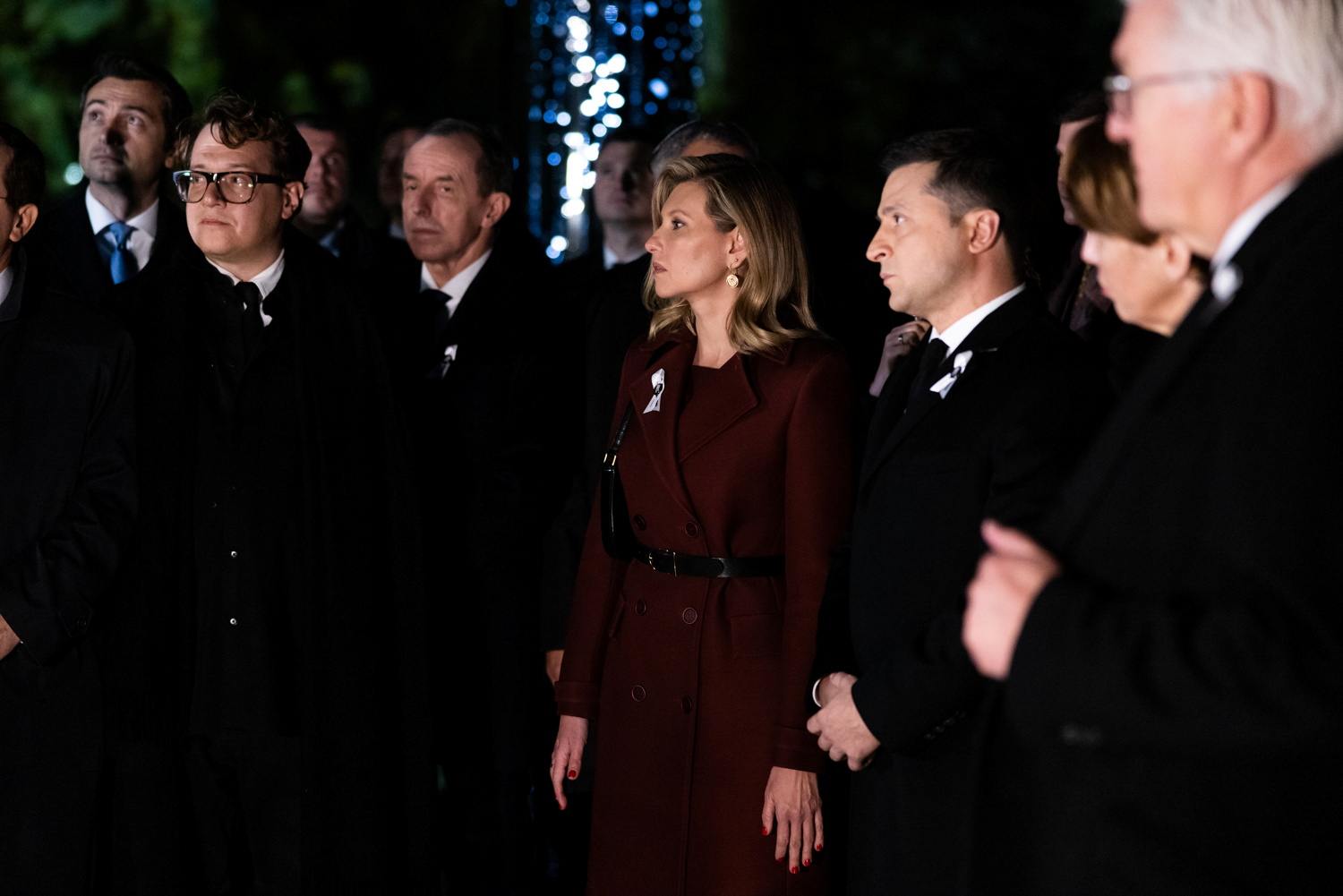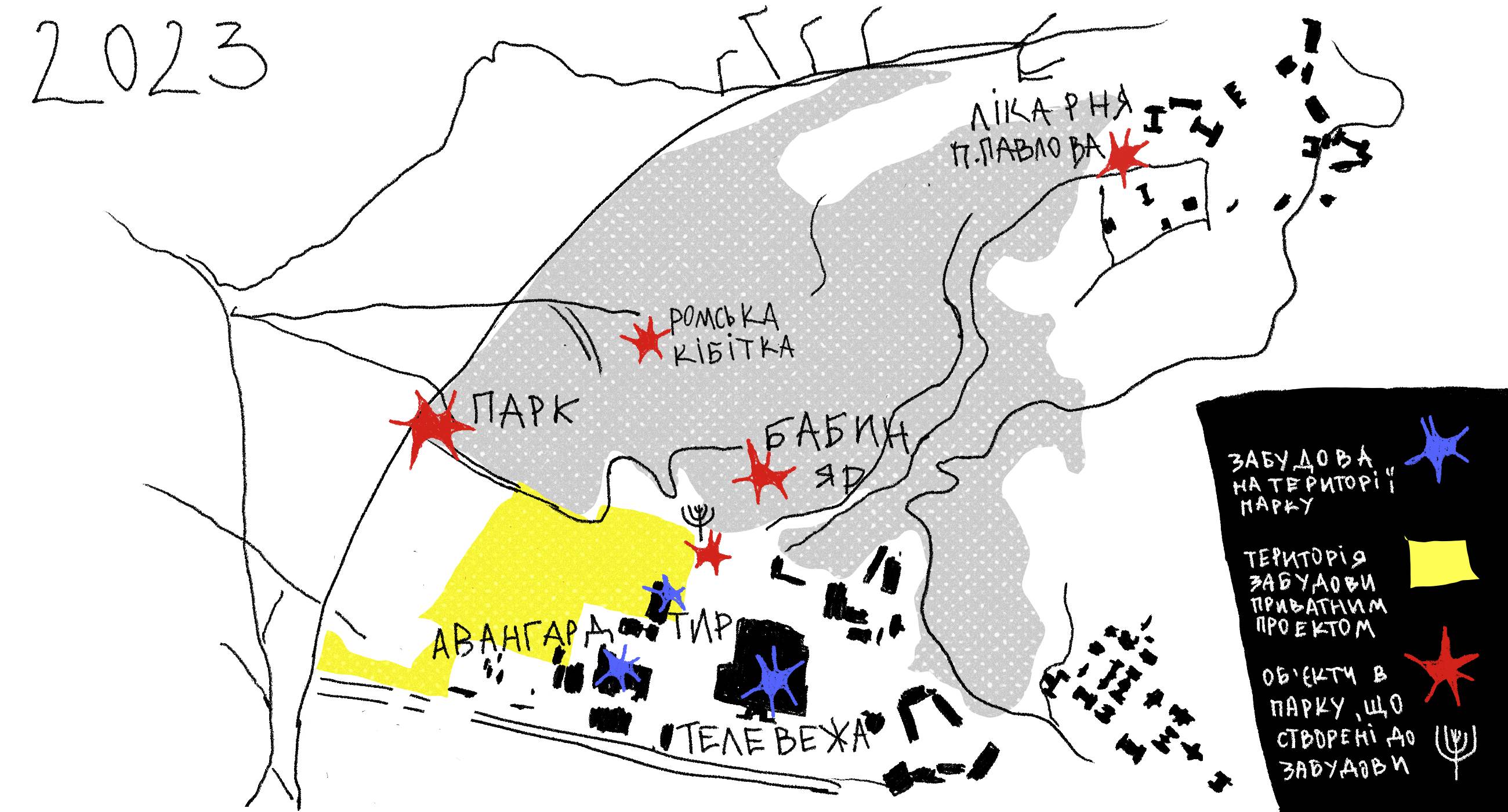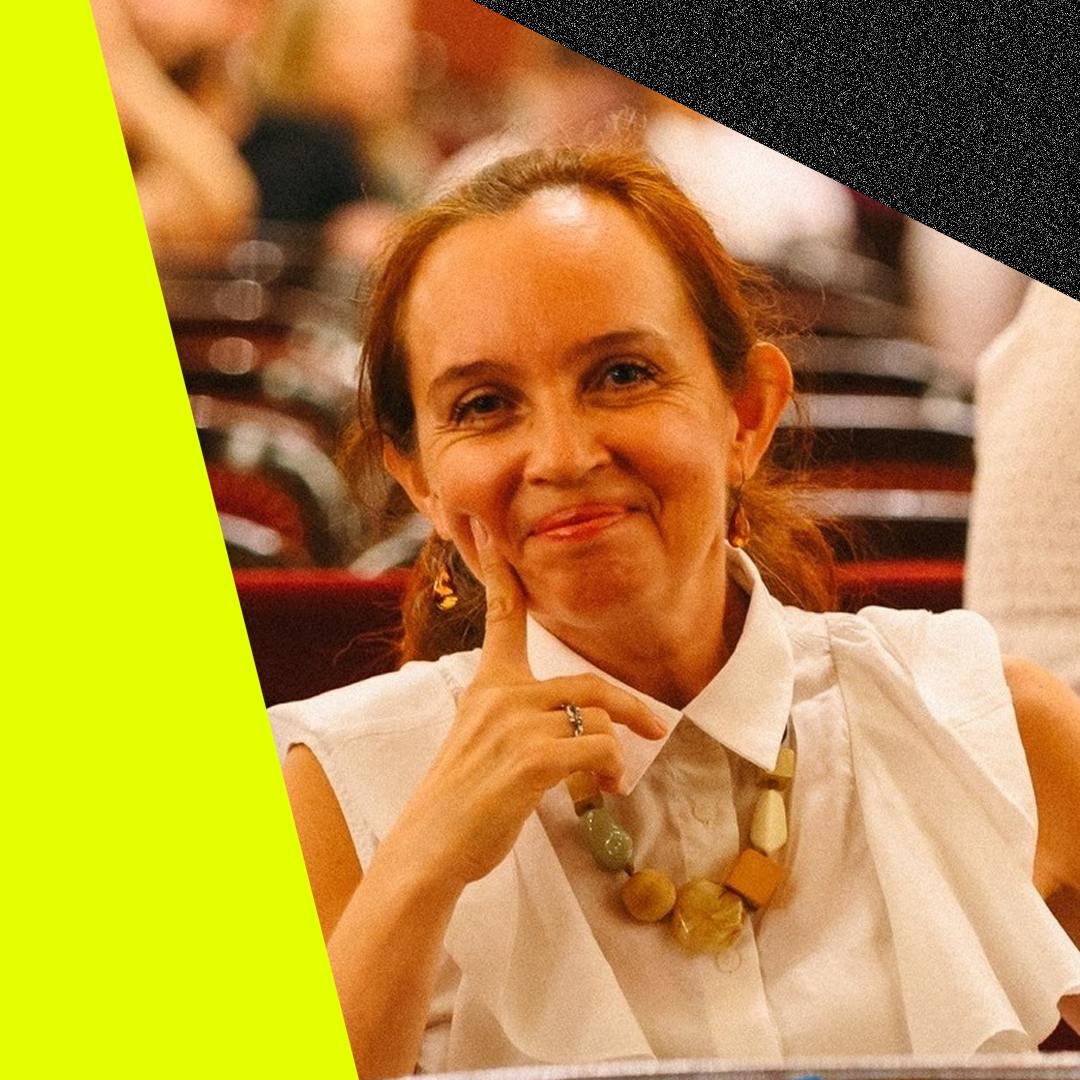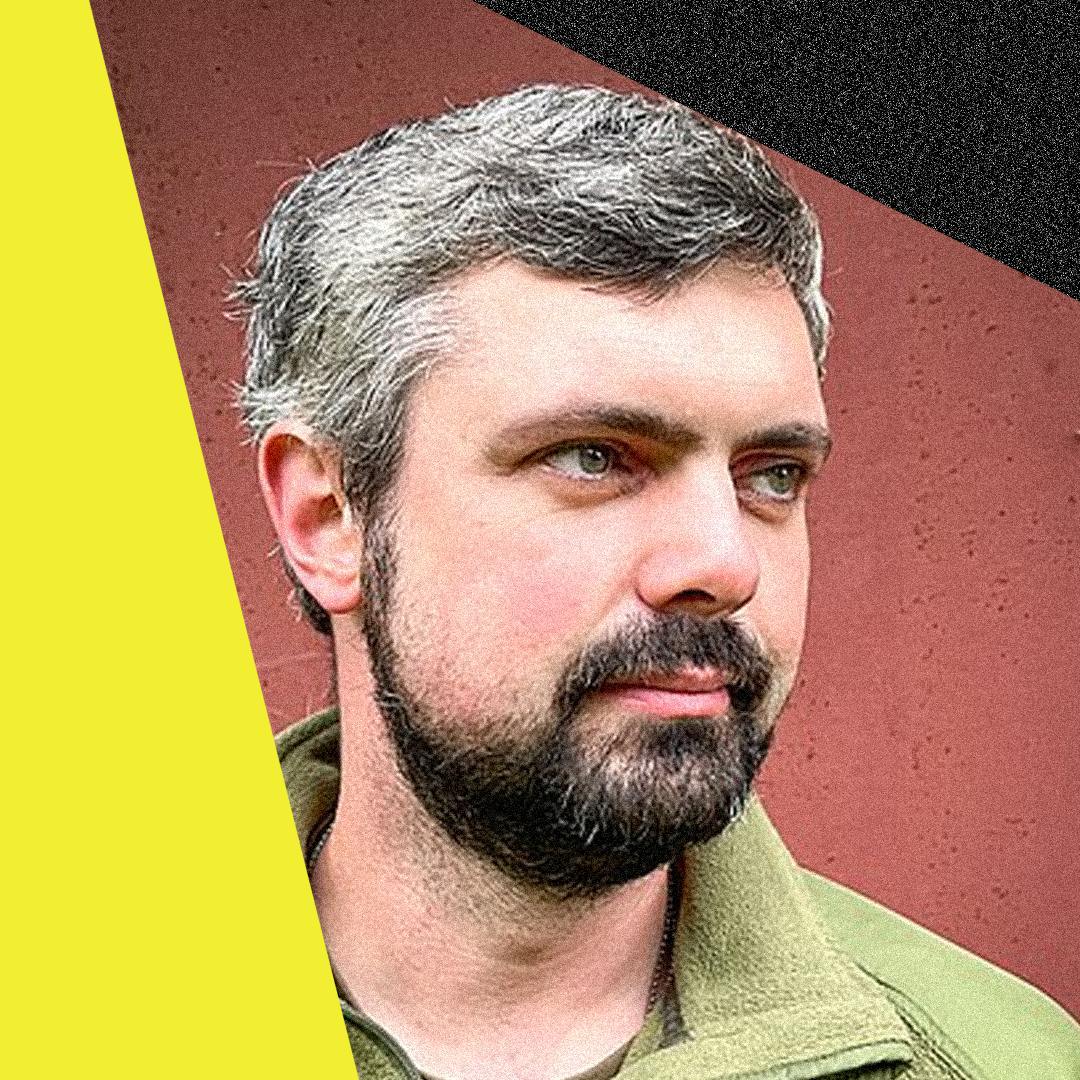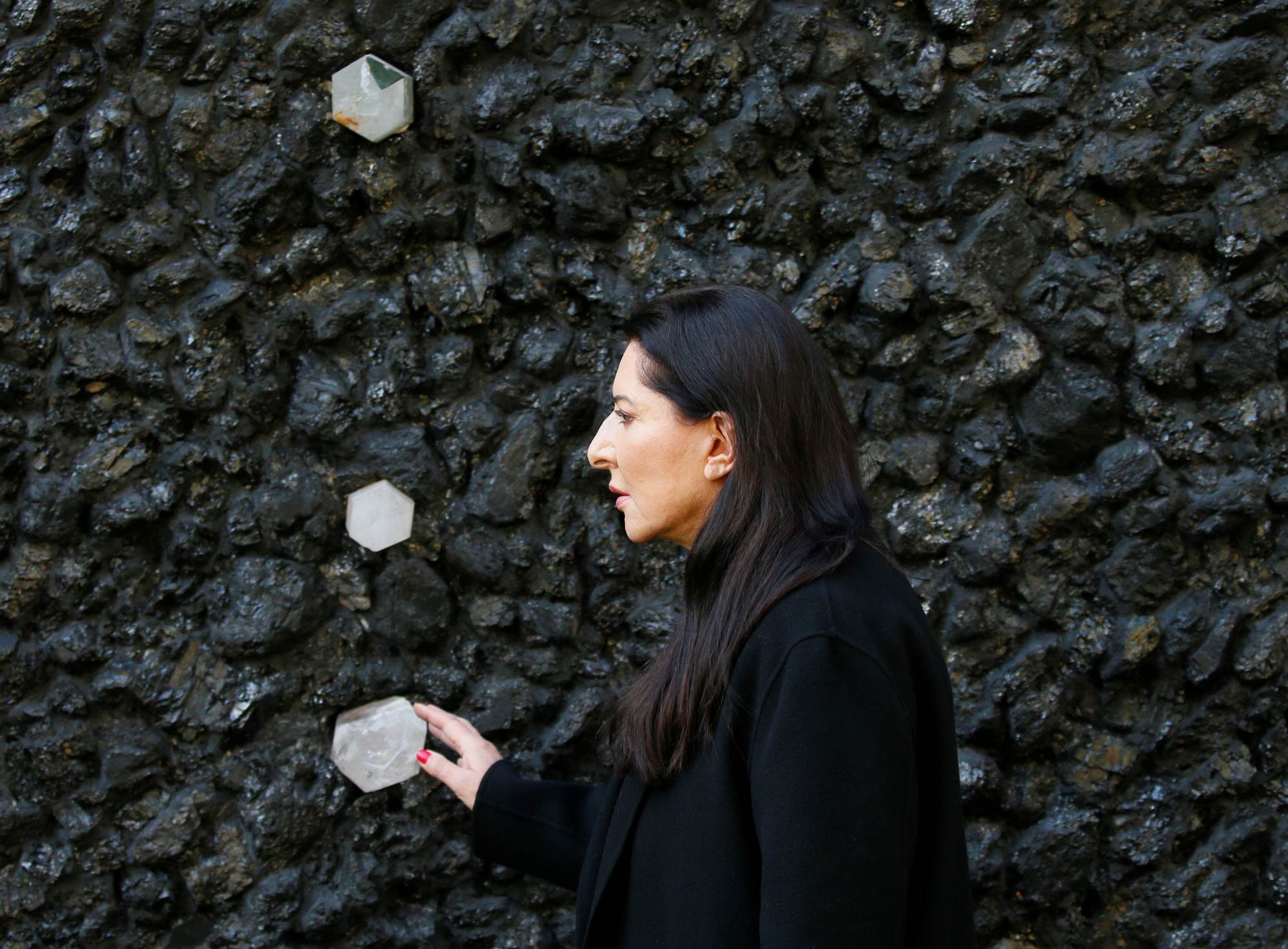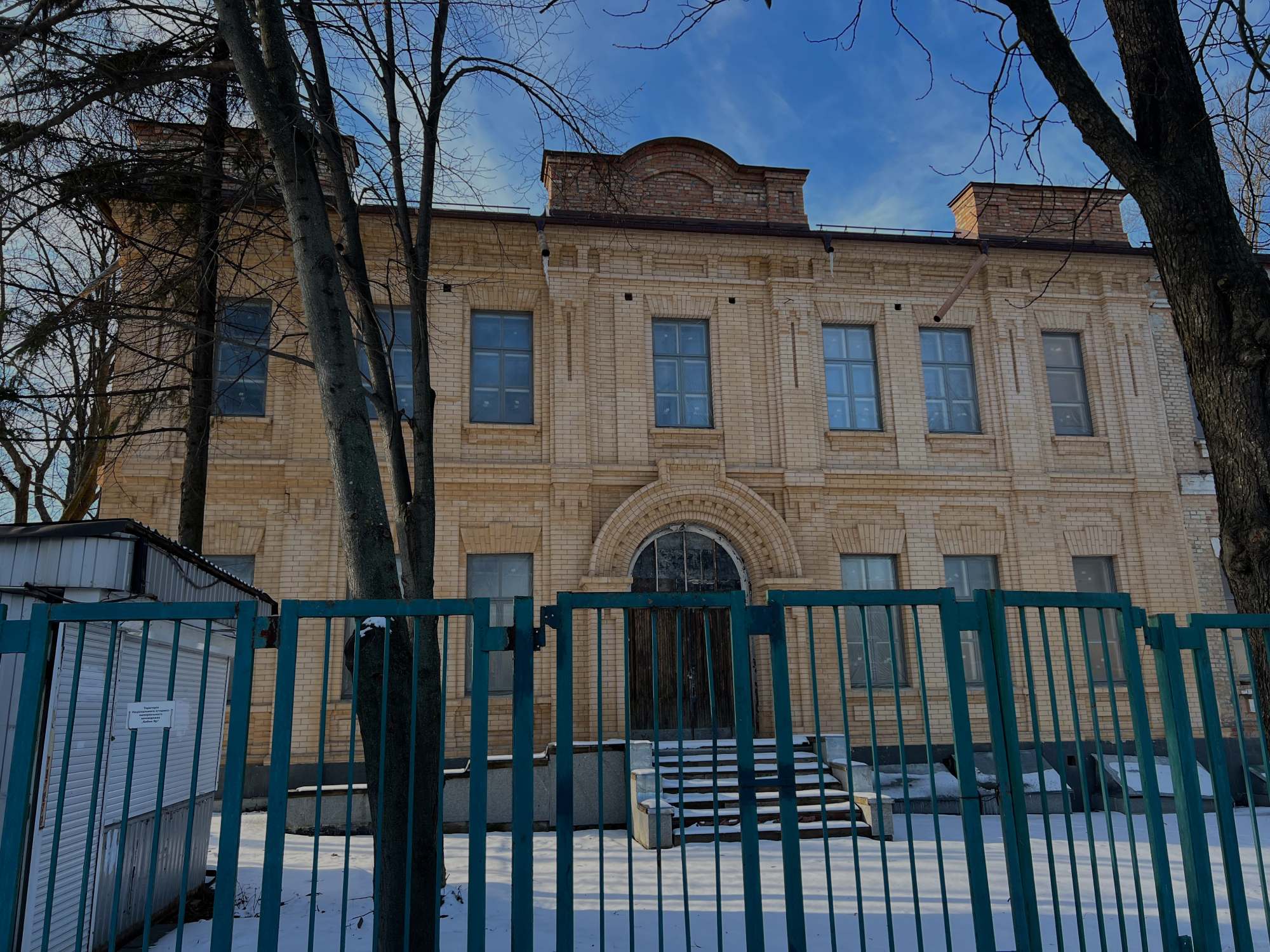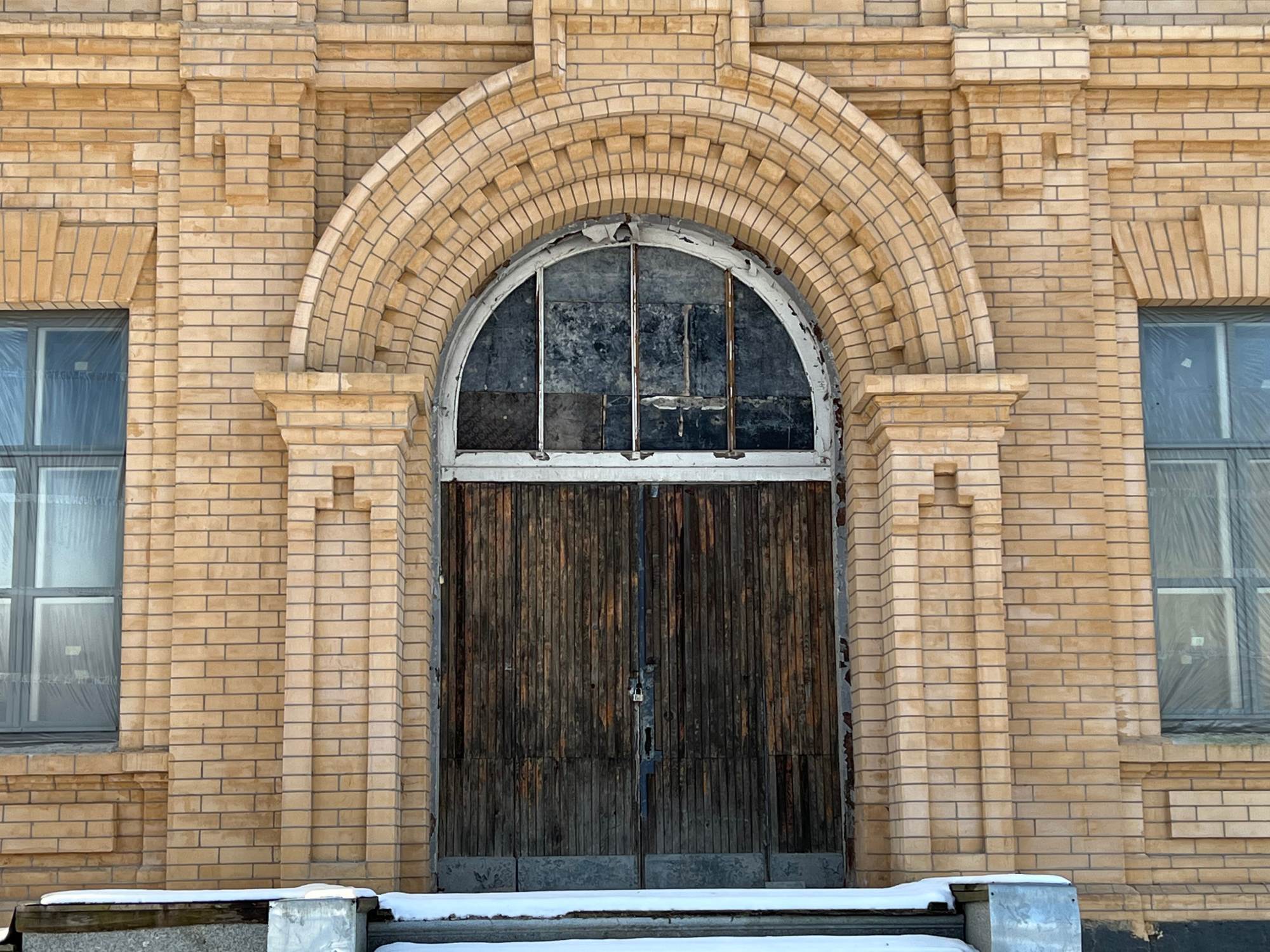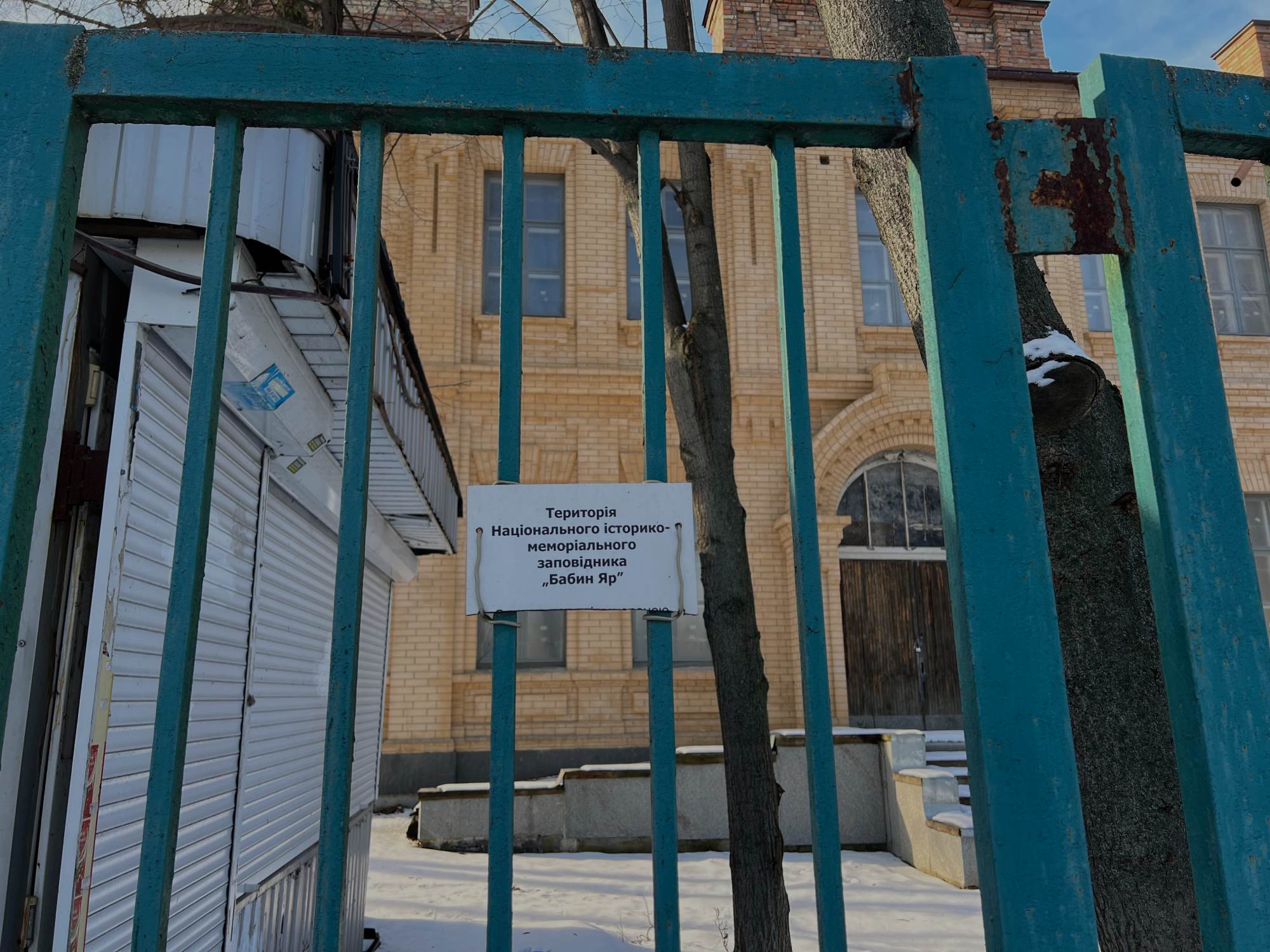On January 27, Holocaust Remembrance Day, President of Ukraine Volodymyr Zelenskyy and Head of the Presidential Office Andriy Yermak visited the Babyn Yar tract. The event was organized by the Babyn Yar Holocaust Memorial Center, a private initiative that was once created by a group of Ukrainian and Russian oligarchs.
Disputes over the right to memorialize the events at Babyn Yar have been going on for years. The key questions — who has the right to build a museum at the site of the tragedy, collect archival materials, and develop a memorial policy — remain unanswered. Meanwhile, Ukraine still does not have a single specialized museum dedicated to the history of the Babyn Yar tragedy and the Holocaust.
Zaborona’s editor-in-chief Kateryna Serhatskova and journalist Nastia Kalyta have figured out what happened to the Holocaust Memorial Center project, how its “artistic director” tried to create an immersive practice of living through the victim’s experience, which was later called a human experiment, and why neither the state nor private donors can agree on a single concept.
What does the Memorial Center do now, and who runs it?
Shortly before the full-scale invasion, the staff of the Babyn Yar Holocaust Memorial Center (BYHMC) discussed an algorithm of actions in the event of a possible Russian attack on Ukraine. It was decided that the staff should evacuate and take with them the archival materials and artifacts that the Memorial Center has been collecting for years. The archive consists of about two trucks of documents and objects purchased over the past three years in Ukraine, on eBay and Amazon, which, according to Babyn Yar’s CEO, Maksym Rabinovych, are estimated at tens of millions of hryvnias. The collection includes furniture, photographs, archival documents, and other items related to Jewish life in 1941-45.

Maxim Rabiovych. Photo from Maksym Rabinovych’s personal archive
When the Russian army launched an offensive, almost the entire staff — about 120 people — left for western Ukraine, where the CEO of the foundation, Maksym Rabinovych, booked a hotel complex. From there, some people evacuated abroad, mainly to Poland and Germany.
Russia’s full-scale invasion put the main activities of the Memorial Center on hold. In 2022, the management planned to build a Holocaust museum and complete the Memorial Mound, which, according to Rabinovych, was 30% complete. On March 17, 2022, at a meeting of the public council of the BYHMC, the director said that the center was suspending most projects to concentrate on raising funds for the purchase of humanitarian aid, and is going to spend the 50 million hryvnias remaining on the foundation’s account on humanitarian aid, armored ambulances, and first aid kits in cooperation with the Victor Pinchuk Foundation. According to Rabinovych, the staff had to be reduced by 60-65%, and activities narrowed to historical research, the Names project, and the project to digitize archival data on the Holocaust in Ukraine, funded by the oligarch Leonard Blavatnik Foundation (Zaborona wrote about this here).
The reason for the suspension of the Memorial Center’s main activities was the imposition of sanctions on its key sponsors. Among them were Mikhail Fridman and German Khan, the founders of the Russian company Alfa Group and former co-owners of the TNK-BP oil company, which they sold to the state-owned Rosneft in 2013. These are top Russian oligarchs with close ties to the Kremlin, which is why their capital was frozen immediately after the invasion began. And then, in early December 2022, Mikhail Fridman was arrested in London on a money laundering case.
“When the sanctions were announced, Fridman and Khan resigned from the Supervisory Board. They no longer have anything to do with the foundation,” Maksym Rabinovych said in an interview with Zaborona. “Today, we have enough funding to run online projects. We have 2–3 systemic donors: Victor Pinchuk and [World Jewish Congress president and philanthropist] Ronald Lauder. There are also several donors who fund projects. Most of our programs are now frozen: the museum construction, projects related to international institutions that required a lot of staff, which we do not have now.”
BYHMC’s artistic director Ilya Khrzhanovsky, a Russian film director who managed most of the foundation’s processes, stopped his activities shortly after the invasion began. However, in an interview with Tablet Magazine, he said that he is still formally the head of the foundation, but does not receive a salary. BYHMC’s CEO Maksym Rabinovych refused to disclose Khrzhanovsky’s current status at Zaborona’s request.

People take part in the performance of artist Maryna Abramovic near her work “Crystal Wall of Crying” in Kyiv.
Photo: Hleb Garanich / REUTERS
How did it all start?

Illustration: Kateryna Kruglyk / Zaborona
In September 2016, on the 75th anniversary of the Babyn Yar tragedy, the then-President of Ukraine Petro Poroshenko announced the creation of the Babyn Yar Holocaust Memorial Center. Formally, it was the signing of a declaration of intent to create a memorial, but it took place with BYHMC’s brand designs as the backdrop, although BYHMC was a private project founded by Russian and Ukrainian oligarchs and entrepreneurs. Poroshenko said: “This memorial should be a symbol of the unification of nations, a place of powerful inoculation so that this tragedy never happens again, a symbol of honor and respect for all Ukrainians regardless of nationality.”
There were high hopes for this declaration: until 2016, there was not a single specialized center or museum in Ukraine that studied the history of the Nazi extermination of Jews during World War II. Interestingly, six months earlier, in December 2015, the Cabinet of Ministers handed over the building of the former Jewish cemetery office at 44 Illienko Street to the Babyn Yar National Historical Memorial Reserve for the purpose of creating a museum in memory of the victims of the tragedy.
In March 2017, a press conference was held to introduce the Supervisory Board of the Memorial Center and the charitable foundation through which it was financed. The board included Israeli politician and former Soviet dissident Natan Shcharansky (who is still the chairman of the board), Russian oligarchs Mikhail Fridman and German Khan, Ukrainian-Russian businessman Pavel Fuchs, Ukrainian oligarch Viktor Pinchuk, brother of Kyiv’s mayor and boxer Volodymyr Klitschko, Chief Rabbi of Kyiv and Ukraine Yaakov Dov Bleich, singer and politician Svyatoslav Vakarchuk, and former Polish President Aleksander Kwasniewski. Since 2016, the director’s position at the BYHMC has been occupied by the cultural manager and researcher Yana Barinova.

From right to left: Vitaliy Klitschko, Victor Pinchuk, Pavel Fuchs, Mikhail Fridman, Natan Sharanskyi.
Photo: Babyn Yar Holocaust Memorial Center
Zaborona’s sources, who worked in the governing structures of the BYHMC, say that the key people who invested the most money in the memorial’s creation, had the most influence and a decisive position, were Russian oligarchs Fridman and Khan. Of these two, Fridman was more influential. They invited their old friend Victor Pinchuk to participate in the project, and then Volodymyr Klitschko joined in. However, neither Klitschko nor Pinchuk invested as much money as their colleagues did.

Pavel Fuchs and German Khan.
Photo: Babyn Yar Holocaust Memorial Center
According to Zaborona’s sources, Fridman and Khan’s motivation to create the memorial stemmed from the deaths of their relatives in Babyn Yar (a fact confirmed by historical data on the executions). Kateryna Kovalchuk, the former project manager of the Memorial Center, also mentioned this.
BYHMC’s ex-director Max Yakover said in an interview with Liga.net that the co-founders have allocated more than $100 million for the project.
But building something on the territory of the Babyn Yar National Reserve required large resources, and not just money. Therefore, the co-founders of the so-called private project had to turn to people who had serious leverage, such as Vadym Rabinovych, a politician and former member of the Verkhovna Rada of Ukraine from the now-banned Opposition Platform — For Life party. Rabinovych founded the Babyn Yar Memorial Foundation in 2005 and was able to lease two land plots from the Kyiv City Administration.
In December 2017, Vadym Rabinovych’s foundation changed its beneficiary to a Russian-Ukrainian businessman and member of the Supervisory Board of the BYHMC Pavel Fuchs (shortly before Russia’s invasion, Fuchs was sanctioned by the National Security and Defense Council and resigned from the Supervisory Board). It was written that Rabinovych sold him his fund along with the land lease debts for 2.7 million dollars. This very foundation is still part of the Memorial Center’s infrastructure — it is managed by Deputy Director Anna Furman.
In addition, it was necessary to gain access to other land plots on the territory of the reserve, such as the Avantgarde Sports Complex and a shooting range. Sources at the Memorial Center say that uniting everything under one “project” required an intervention of the most influential figures in Ukraine. During Petro Poroshenko’s presidency, the process did not move forward in this direction, and the Memorial Center focused more on research and collecting archives and artifacts.

Illustration: Kateryna Kruglyk / Zaborona
The period of Zelenskyy, Yermak, and Khrzhanovsky
In the summer of 2019, a critical change occurred at the Memorial Center: the owners decided to appoint new management. Russian film director Illia Khrzhanovsky replaced Yana Barinova. But officially, he was not the director (Maks Yakover became the director), but the “artistic director.” Zaborona’s sources in the organization say that the decision was made personally by Mikhail Fridman, who had known Khrzhanovsky since his DAU film project. The filmmaker’s arrival caused most of the organization’s employees to resign, and some of them were fired by him.

President of Ukraine Volodymyr Zelenskyy with his wife Olena at a ceremony commemorating the victims of Babyn Yar, one of the largest mass murders of Jews during the Nazi Holocaust, in Kyiv, Ukraine, October 6, 2021.
Photo: Presidential Press Service / Handout via REUTERS
Khrzhanovsky’s main task was to realize large-scale construction plans.
“This will be the largest museum complex in Europe — more than 40,000 square meters,” Khrzhanovsky said during the Ukraine 30 forum. “It will include the Museum of the Babyn Yar Tragedy, the Museum of the Memory of the Victims, the Museum of the Oblivion of the Tragedy, the Museum of the Babyn Yar site itself, the Museum of the History of the Victims — Gypsies and other groups of Kyivans who were killed there.”
To realize such ambitious plans, not only did they need a lot of money, but also major patrons and strong agreements. That’s how the Head of the Presidential Office Andriy Yermak entered the new life of the private project. Ilya Khrzhanovsky had known him before 2014, when the person closest to Volodymyr Zelenskyy was a film producer and an influential lawyer. Yermak supported the idea of creating a memorial center and began to promote it at the highest level.
Zaborona’s sources in the BYHMC claim that it was not about a possible corruption component: Yermak wanted to make the state “look good” in terms of memory policy and the fight against anti-Semitism. In addition, the project’s large funding provided the state with an opportunity to avoid the allocation of already scarce budget funds and enjoy important benefits, such as inviting presidents, prime ministers, and top world stars at the expense of the private project, which opened doors to new partnerships.
On December 15, 2020, a year after Khrzhanovsky’s arrival, President Zelenskyy issued a decree on partnership with BYHMC and appointed Yermak as head of the organizational group that would promote the project’s activities. Soon after, on December 28, a meeting with the president took place, at which Khrzhanovsky presented the concept of the Memorial Center and museum ensemble, most of which was to be realized in 2021, on the 80th anniversary of the Babyn Yar tragedy. Zelenskyy supported the concept.
At the same time, scandals regularly occurred around the private project. For example, the state-owned enterprise Avantgarde Sports Complex, located on the territory of Babyn Yar, launched a public campaign against the Ministry of Culture and Information Policy, which decided to lease part of its premises to the BYHMC.

Illustration: Kateryna Kruglyk / Zaborona
A long-lasting campaign against the project has been launched by the International Babyn Yar Memorial Charitable Foundation, an organization created in September 2016, at the same time that Petro Poroshenko presented his intention to create the Memorial Center. It was founded by the Vaad of Ukraine (co-presidents: Andriy Adamovsky and Josef Zissels) and the All-Ukrainian Jewish Council (president: Oleksandr Suslensky). The Vaad, the Babyn Yar Foundation, and other related initiatives (such as the First of December group) demanded that the state take control of the creation of the memorial and adopt a state concept for memorializing the tragedy.
In 2020–21, when the Presidential Office of Ukraine finally supported the private project, the situation between the BYHMC, the developers of the state concept of memorialization, some Jewish organizations, and civil society could be called an acute conflict. This is also evidenced by the appeals by members of the BYHMC Supervisory Board, representatives of some Jewish organizations and civic initiatives to the Ukrainian authorities to help implement the private project (here is an example). Instead of a “symbol of the unification of nations,” as Poroshenko called the memorial idea in 2016, the project has become a symbol of discord.
The “private” concept and its narratives
Since its inception, the Babyn Yar Holocaust Memorial Center has been engaged in three key areas: historical research and the formation of a historical narrative; the collection of oral stories, archives, and artifacts; and architectural designs for the future museum complex. Before Khrzhanovsky took over as artistic director, the center’s work looked like this.
In 2016, a team of five people worked on the private project, says Kateryna Kovalchuk, the former program manager of the Memorial Center.
“After we announced the project, we felt it interested both the Ukrainian and Jewish communities, and we had the resources to realize the memorial space,” she recalls in a conversation with Zaborona. Kateryna Kovalchuk supervised the creation of the historical narrative of the Memorial Center’s exposition and chaired the scientific council of historians. It was during her tenure that the process of search and archival work was launched. According to her, she had “strategic work to do: to describe this department, make a header of the areas of work, and find historians who would work on it independently.”
“The Voices. Testimony to the Holocaust in Ukraine” oral history project was coordinated by Volodymyr Shevchenko, and the chief historian was Dutch professor Karel Berkhoff. In the beginning, the team was more interested in photographs and oral histories, and if they found something else, they added it to the collection.
A researcher in the field of philosophy of history and memory studies, Oksana Dovhopolova worked at the Memorial Center to create exhibitions and concepts. She created one of these concepts together with Austrian Dieter Bogner, one of the world’s leading museum designers. This concept became the basis for the future main exhibition, which was never implemented due to changes in the organization.
In a conversation with Zaborona, Oksana says that the team sought to create a Memorial Lab, the concept of which is tied to the framework of life and dignity. The lab was supposed to lead people to understand the basic values of human rights, where the latter are the ethical core, and any deviation from them is a step on the path to Babyn Yar. As a result of this concept, a space was to appear in which a person could receive information about human rights initiatives at the end of the exhibition, and see what they could do on their own. This is a step into practices that are not related to memory, but to human rights violations.
In the summer of 2019, Illia Khrzhanovsky presented a new concept of the Memorial Center’s vision to donors. Almost a year later, amid another scandal over the private project, it was published by Istorychna Pravda. Former employees of the BYHMC tell Zaborona that the decision that Khrzhanovsky was entering the project with a new vision and his team was based on this concept. It is known that his closest colleagues Inna Schorr and Svitlana Dragaeva, who had previously been involved in the creation of the DAU film project, worked on this document.
What distinguished the concept from the previous one was that it focused on the visitor’s emotional involvement, involvement in immersive activities (for example, trying on the experience of an executioner or a victim of a crime), and the issue of Ukrainian collaboration in the murdering of Jews was given a prominent role in the narrative. The previous team could not work within the framework set by Khrzhanovsky.

Oksana Dovhopolova. Photo: Oksana Dovhopolova / Facebook
“For us, it was impossible,” Oksana Dovhopolova says in an interview with Zaborona, “They wanted to create a human experiment, make them go through an extreme experience. And this is unacceptable.”
Wow effects

Illustration: Kateryna Kruglyk / Zaborona
After the updated vision of the Memorial Center was published, discussions erupted about the appropriateness of living the real experience through art, immersion in commemorative practices, and comparing the memorial to Khrzhanovsky’s equally controversial project, the DAU film. The discussions also touched on the fact that the visitor needed to be immersed in the experience in all possible ways: physical elements with a strong emotional impact, sounds, and even the creation of special humidity, temperature conditions, smells, etc. The United States Holocaust Memorial Museum in Washington, D.C., also chose the path of involvement in the experience, but through the documents of the dead. On the one hand, they pay tribute to the dead by carefully studying all the paper evidence and supporting their memory, and on the other hand, they take on someone else’s identity.
Together with Oksana Dovhopolova, Irena Holuba, a psychologist from Latvia, participated in the discussions of Khrzhanovsky’s new vision. They were developing an emotional map of a person: what emotions could be pulled when a visitor is in the memorial space. Given the Ukrainian experience, in particular the outbreak of the war in 2014, it was also necessary to take into account the level of trauma in society — and the trauma of Ukrainians is constantly growing.
“People often do not realize [what is happening to them]. Someone says: ‘I’m fine, I’m fine.’ Then something triggers them and a person has a panic attack,” says Oksana Dovhopolova. “A museum exhibition should not trigger panic attacks.”
In psychology, there is a concept of a zone of normality, or a comfort zone, when a person does not learn and is not affected by anything. Learning takes place in the risk zone. One of the tasks of the memorial is to bring a new experience, and this requires a risk zone. The next zone after risk is panic. In a state of panic, a person does not learn: they die or escape. That is why Oksana and Irena carefully worked on these boundary issues, and the museum space had to have certain “anchors” to help people feel present and not fall into the traumatic past.
“You can’t offer a person to feel the same way as someone who was hit by a bomb,” explains Dovhopolova. “When they paint flowers at the cemetery of cars where people died in Bucha, it’s terrible. But when a Canadian volunteer of Ukrainian descent comes to Bucha to work and listen to people, it’s different. She heard the story of a man who said, ‘This is where my house used to be, this is the fence, and it’s full of bullet holes. There is no point in changing it or repairing it because there is no home behind it anymore.’ She painted flowers on this fence, and the man smiled for the first time when he saw it. It’s a way of emotional empathy, and it’s about completely different things.”

Kateryna Semenyuk. Photo: Kateryna Semenyuk / Facebook
Kateryna Semenyuk, co-founder and curator of the Past / Future / Art platform for memory culture, worked as a public program manager at the Babyn Yar Holocaust Memorial Center. She stayed at the organization for two more months after the arrival of the new director.
“When we work with the topic of Babyn Yar, we realize that it was followed by a period of organized oblivion imposed by the Soviet Union,” says Semenyuk. “We began to deal with the memorialization of this tragedy only after Ukrainian independence. What can be found after so many years? Everyone [in the organization] understood that this was one of the challenges — to create a museum exhibition, to tell a story when there are few artifacts left. I don’t think there is a problem that we have now lost some powerful material archive, as it remained with the occupiers in the person of Illia [Khrzhanovsky]. But the problem is that all the oral stories [recorded during the years of the Memorial Center’s existence] remained in the fund.”
However, neither the Supervisory Board, the public council at the BYHMC, nor the Presidential Office of Ukraine saw any problems with the new concept and the new team of the Memorial Center. The main goal was to create, in the words of Kyiv Mayor Vitaliy Klitschko, a “wow effect” for the 80th anniversary of the Babyn Yar tragedy, and to do a lot in a short time. The new leadership of the center was just right for this. In addition, it already had a lot of support at the international level, so the project could defend itself from criticism and even criminal cases for a long time.
The conflict between public and private concepts
On October 20, 2017, shortly after the presentation of the Supervisory Board of the Babyn Yar Holocaust Memorial Center and a year after the stated intention to create the memorial, Petro Poroshenko issued a decree on the creation of a state concept for the development of the Babyn Yar National Historical and Memorial Reserve. This document was supposed to regulate state policy in the field of memorializing the tragedy and could be used by politicians and officials when making certain decisions, such as in the construction sector or while organizing cultural events. To implement the decree, a working group was set up at the Institute of History of the National Academy of Sciences of Ukraine, which included historians, museum experts, architects, and lawyers.

Anton Drobovych. Photo: Wikimedia
For several years, historians prepared the document, discussed it with scholars from around the world, organized public hearings, and tried to involve representatives of the private project in the process.
“The state concept does not provide for capital construction at the execution sites [unlike the concept presented in 2020 by the artistic director of the Babyn Yar Holocaust Memorial Center, Illia Khrzhanovsky]. Representatives of the so-called private project did not want to enter into a dialogue with members of the working group that developed the state concept,” Anton Drobovych, a former employee of the BYHMC, and since 2019 the head of the state Institute of National Memory, told Zaborona. “The [state vision] envisages a building somewhere nearby, near the garages outside the burial sites, so we would have to discuss this with the architects and come up with some kind of more or less visualized product. In addition to the concept, the government would have to approve it as well. And say: ‘Everyone can do it — private and public organizations — but the red lines are these, the principles are these, the rules are these.’ Then it would be a good story that would not exclude anyone from the process, but would set the parameters.”
Finally, in November 2021, the state concept was submitted to the Cabinet of Ministers, the Verkhovna Rada, and the Presidential Office for consideration. But, as Deputy Minister of Culture and Information Policy Kateryna Chuyeva told Zaborona, it has not yet been approved.
However, the state has actively cooperated and continues to cooperate with the private project. The organization of the 80th anniversary of the Babyn Yar tragedy was the apotheosis of this cooperation. The “artistic director” was able to organize an international program dedicated to the anniversary in Kyiv on a large scale and under the state umbrella. At Babyn Yar, the world’s most famous performer Marina Abramovich opened the Crystal Wall of Crying installation, the Berlin Symphony Orchestra performed, and director Serhiy Loznitsa presented his film Babyn Yar. Context. A small part of the program was paid for from the budget of the Ministry of Culture and the Presidential Office, and the largest expenses were covered by the sponsors of the BYHMC.

Artist Maryna Abramovic performs next to the “Crystal Wall of Crying” artwork in Babyn Yar, the place of one of the largest mass killings of the Holocaust during World War II, in Kyiv, Ukraine, October 4, 2021.
Photo: Gleb Garanich / REUTERS
“Everything was coordinated with the Presidential Office,” says Zaborona’s source in the former management structures of the Memorial Center. “The Office had neither the resources nor the money to organize it, and Illia [Khrzhanovsky] wanted a bigger scale. He made sure that German President [Frank-Walter] Steinmeier came, which even the Presidential Office could not do.”
“The Housing Issue”

Illustration: Kateryna Kruglyk / Zaborona
An important part of the cooperation between the state and the private project was land. And it became the most difficult issue because there are many land plots on the territory of the reserve that belong to different organizations. However, the National Historical and Memorial Reserve Babyn Yar, which is subordinated to the Ministry of Culture and Information Policy, was the anchor for resolving the territorial issues.
In 2015, the reserve took ownership of a building at 44 Illienko Street, which once housed the Jewish cemetery office. This building was a silent witness to the murder of more than 100,000 people during the Nazi occupation of Kyiv in 1941–1943. It was in this building that the Museum in Memory of the Victims of the Tragedy was to appear, and the state allocated money for its repair. In addition, it was the reserve that approved the placement of certain objects in Babyn Yar. It was obvious to all the participants in the story that the person who runs the reserve holds the trump card.
According to Zaborona’s sources, in early 2021, the head of the President’s Office, Andriy Yermak, approached the leaders of the private project, asking who of them wanted to become the director of the reserve. Discussions began within the organization, but soon Yermak announced that Rosa Tapanova, a lawyer who worked at the International Law Firm, which Yermak was the founder and co-owner of until 2019, would be in charge of the reserve. In February, she began acting as director of the reserve. Borys Glazunov, who had been managing the reserve since 2011, handed in his resignation.
But there had been problems with the transfer of the building to the private project for a long time. For instance, the Minister of Culture and Information Policy Oleksandr Tkachenko did not support the activities of the BYHMC for some time, and did not want to allocate the premises of the former Jewish cemetery office and land plots. However, as sources at the BYHMC told Zaborona, Volodymyr Zelenskyy ordered him to follow the line of the Presidential Office. In the end, Tkachenko said that the Memorial Center “does not pose a risk,” and at the end of 2021, the former cemetery office was leased to the private project. The minister refused to talk to Zaborona on the topic.
According to the former director of the center, Maksym Yakover, the building was to be rebuilt using the design of the OFFPOLINN architectural firm. The sponsors of the BYHMC were to invest about €5 million in the reconstruction over the next three years. However, the full-scale invasion has put this plan on hold. Now the building, which was supposed to be a museum for the victims of the Babyn Yar tragedy, stands half-repaired behind a fence.
Kateryna Kovalchuk, the former project manager of the Memorial Center, recalls that in 2016 the team was “inspired by the idea of realizing the memorial.”
“Everyone was driven by the idea of creating a new, modern type of memorial space in Ukraine,” Kovalchuk says. “When I accepted the job offer, there were certain reputational risks, but I believe that in our country, private initiatives are more successful than those initiated by the state. I believe that public-private partnerships are the best tool, and we have been working towards that. The state has never had the money for this, and, in general, it has never been its agenda. Every time the heads of state talk about memorialization, they mention our project. This indicates a great success.”
The idea of a public-private partnership was never realized.
“Before the war, we were supposed to sign a so-called public-private partnership agreement to build a museum [in the former Jewish cemetery office],” Maksym Rabinovych, the current director of the Memorial Center, told Zaborona. “The plan was to build more than 15 museums in 10 years, but it is clear that this is an impossible task for a private foundation. For this purpose, there is state-owned land, the land of the Kyiv community owned by the Kyiv City State Administration, and the land owned by a private owner, the foundation. We wanted to combine these efforts and invest private money in the land owned, among others, by the state. This would be the first public-private partnership in the cultural sector.”
Russia’s full-scale war against Ukraine can change the future memorial and the historical agenda of Ukraine’s political class and society. It can be assumed that post-war commemorative and memorial practices will mostly focus on the victims of Russian aggression, putting on hold the conversation about the Holocaust tragedy as a distant and less relevant catastrophe compared to the war. On the other hand, the world’s leading economists are already calling Ukraine the new most attractive platform for financial injections from foreign donors. It is likely that the number of beneficiaries interested in creating or developing ready-made memorial projects will increase. However, which option is the most realistic, what Ukraine’s memorial agenda will look like, and the future status of Babyn Yar are open questions.

